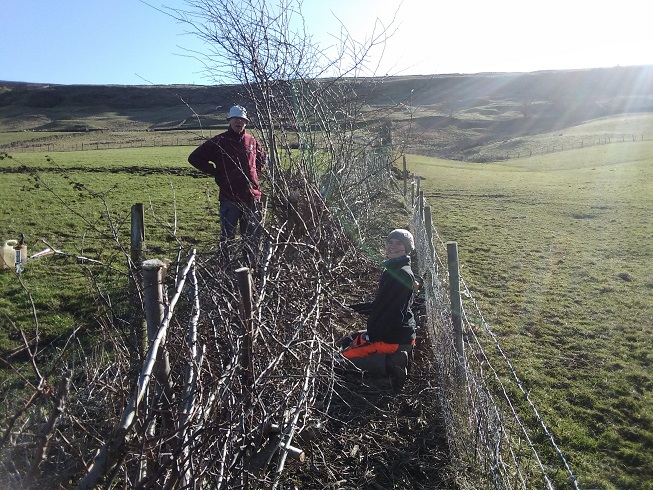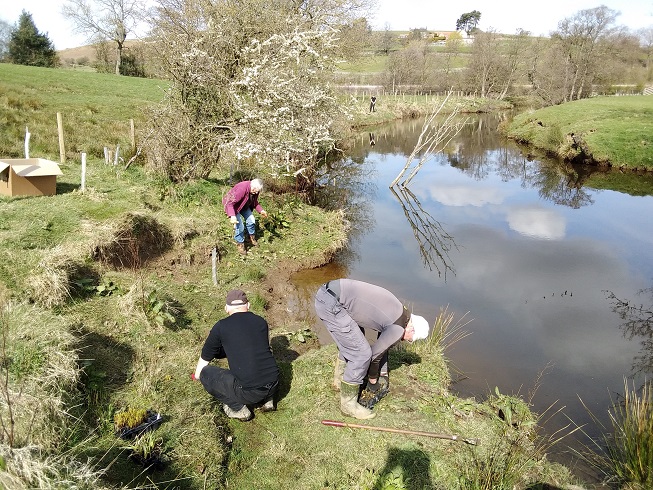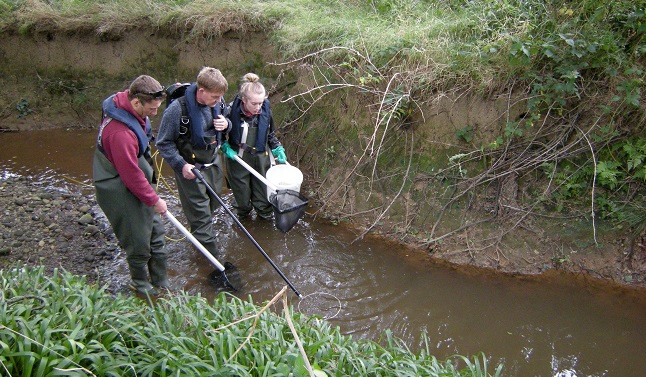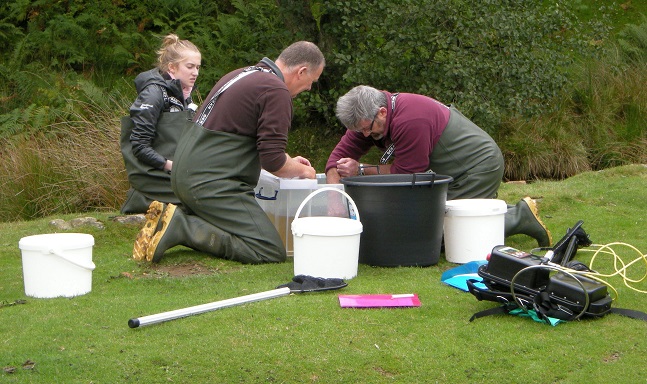Practical conservation volunteers undertake a range of tasks in the National Park
This type of volunteering gives people the opportunity to learn new skills, meet new friends, keep fit and help to look after this important landscape.
The National Park Authority works in partnership with a number of organisations to deliver these tasks including the National Trust, Forestry England and Butterfly Conservation.
We welcome people of all ages, backgrounds and abilities and have groups that meet throughout the week. Volunteers will need a reasonable level of fitness, be enthusiastic and not mind working in most weather conditions.
Please see our Current Volunteering Opportunities page for information on other projects currently available.
Volunteers under the age of 16 will need to accompanied by an adult, those 16-18 will need parental consent. Individuals in these age groups may be interested in joining our Young Rangers, who meet once a month to learn new skills and take part in a range of practical tasks and activities. For more information please visit our Young Rangers page.
Here are some examples of how practical conservation volunteers get involved with the work of the National Park Authority:
Maintaining rights of way
There are around 2,200km (1,400 miles) of public rights of way in the North York Moors National Park, allowing walkers, horse-riders and cyclists to access the incredibly special landscapes and vistas that can be found here.
The National Park Authority is responsible for the maintenance of public rights of way and National Park Rangers, Volunteers and Apprentices are instrumental in allowing this to happen. Work may include resurfacing, cutting back undergrowth, replacing gates and boardwalks or improving drainage.
Tree and hedge planting
 The North York Moors National Park must play a significant part in achieving the regional ambition of being a carbon negative economy by 2040. As part of this, the National Park's Management Plan includes an objective to create at least 2,500 hectares of additional wooded habitat by 2032. As well as capturing and storing carbon, trees and hedgerows provide a home, corridor and important food-source for birds and wild pollinators. They help prevent soil erosion, reduce flood risk and lessen the amount of pollutants that enter rivers.
The North York Moors National Park must play a significant part in achieving the regional ambition of being a carbon negative economy by 2040. As part of this, the National Park's Management Plan includes an objective to create at least 2,500 hectares of additional wooded habitat by 2032. As well as capturing and storing carbon, trees and hedgerows provide a home, corridor and important food-source for birds and wild pollinators. They help prevent soil erosion, reduce flood risk and lessen the amount of pollutants that enter rivers.
 Planting/maintaining woodland and laying hedging are therefore common tasks for conservation volunteers in the North York Moors. The removal of plastic tree guards from previously planted trees is also something the National Park Authority makes a priority. A recent project that came to an end in 2022 saw more than 300 hectares of important wooded habitat improved (equivalent to more than one square mile of trees) and more than 58,000 plastic tree guards removed! This particular project (funded by a grant from the government’s Green Recovery Challenge Fund) provided seven people with employment and involved an additional 13 volunteers.
Planting/maintaining woodland and laying hedging are therefore common tasks for conservation volunteers in the North York Moors. The removal of plastic tree guards from previously planted trees is also something the National Park Authority makes a priority. A recent project that came to an end in 2022 saw more than 300 hectares of important wooded habitat improved (equivalent to more than one square mile of trees) and more than 58,000 plastic tree guards removed! This particular project (funded by a grant from the government’s Green Recovery Challenge Fund) provided seven people with employment and involved an additional 13 volunteers.
Vegetation clearance
Clearing invasive or unwanted vegetation is often just as important to the habitats of the North York Moors as planting new trees and hedges. Conservation volunteers will often be involved in tasks that see them tackle species such as the invasive Himalayan Balsam, which can take-over river banks and prevent growth and regeneration of other native species. Further examples include clearing brambles from recently-planted areas of juniper, removing gorse bushes that are damaging scheduled monuments and 'bracken bashing' to protect habitats such as moorland and grassland.
Electric fishing
Electric fishing is a method used to determine fish populations in watercourses, commonly carried out by organisations such as the Environment Agency and the various River Trusts. Sites across the River Esk catchment have been monitored using this technique over the last two decades as a way of estimating juvenile fish populations. The method involves one team member wearing a backpack which holds a battery and control box. A cathode (the positive terminal) trails behind the backpack resting in the water and the operator also holds a pole with a metal ring on the end (the anode or negative terminal). Once the operator places the anode in the water and turns the system on, a small current is able to pass through the water between the two terminals. This temporarily stuns the fish, enabling them to be caught in nets and buckets by team members walking behind the operator. The fish are then quickly transferred to a large holding tank, before being measured, aged and released. They suffer no ill effects from their stunning experience.
Electric fishing is a really good way of estimating fish populations and this is extremely important on the River Esk. Atlantic salmon is a species that is struggling due to a wide variety of issues including water quality and habitat issues, barriers to fish migration and poor survival rates at sea. Monitoring juvenile numbers across the Esk every year will help to highlight areas where these issues are magnified and can therefore help target the conservation work we’re undertaking in the catchment to improve water quality and riparian habitats.

Get involved
Remember to visit our Current Volunteering Opportunities page to find out how you can get involved with practical conservation in the North York Moors National Park.

